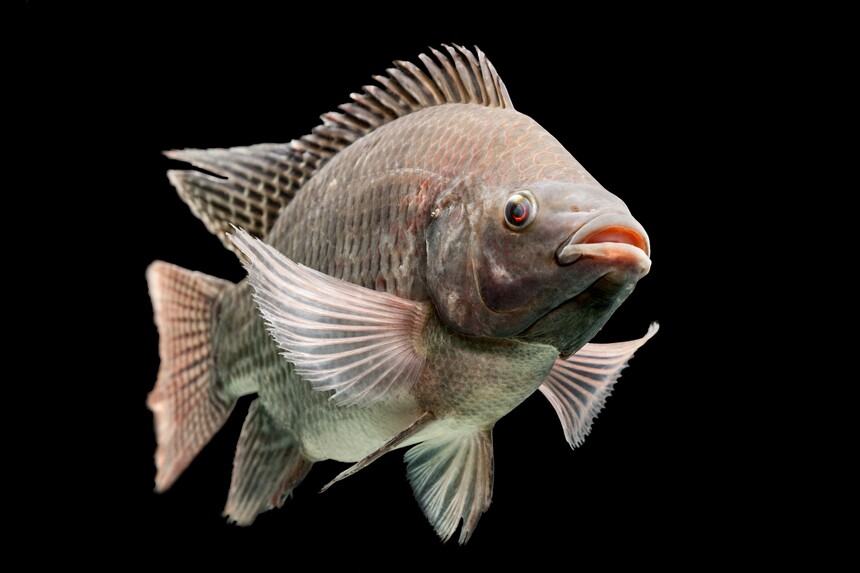|
The Truth Behind the "Surge" Rumor in Tilapia PricesThe Truth Behind the "Surge" Rumor in Tilapia Prices: A Calm Observation of the Market Amid Slight Increases in U.S. Orders
I. Short-Term Market Volatility Against the Background of Tariff Reduction Since May 14, 2025, the tariff on Chinese tilapia products exported to the U.S. has been significantly reduced from 170% to 55%, a policy adjustment that has sparked high attention within the industry regarding market trends. According to Mr. Li, head of the raw material procurement department at a leading Guangdong-based export processing plant, U.S. buyers did increase purchases of Chinese tilapia in the 2-3 days after the policy took effect due to inventory shortages. This short-term release of demand primarily stems from the cost advantage brought by the tariff window; however, order prices remain generally low, leaving limited profit margins for processing exporters, and no large-scale procurement boom has occurred in the market. II. The Essence of the "Surge" Rumor: Market Misinterpretation Caused by Localized Order Disturbances Despite claims of a "dramatic surge in tilapia prices," industry insiders in Guangdong, Hainan, and other regions have denied this narrative. Data shows that on May 15, the mainstream quoted prices for tilapia in Maoming and Zhanjiang, Guangdong, were 6.4 yuan/kg for sizes under 0.5kg and 8.4 yuan/kg for over 0.5kg, representing a mere 0.2 yuan/kg increase from May 13. In Hainan, farm-gate prices remained stable at 5.6 yuan (under 0.5kg) and 7.6 yuan (over 0.5kg), with factory procurement prices at 6 yuan and 8 yuan, showing no significant fluctuations. Industry analysts note that the so-called "surge" may stem from price anomalies in individual special orders, which account for a tiny proportion of the market and are not representative. Some farmers, misjudging market conditions, have adopted a reluctant-to-sell mentality, and even canceling the contract after fish are ordered have further exacerbated confusion in market quotations, though overall transaction volumes remain within rational limits.
III. Seedling Market and Stocked Fish: Short-Term Stability and Long-Term Supply Pressure Coexist In the seedling market, Hainan Tianzhiyu Aquatic Technology Co., Ltd. reports that current demand for fingerling orders from farmers is stable, with balanced production and sales. Maoming Fuhao Aquaculture saw a record-high order of 1.5 million fingerlings on May 14, indicating that some farmers remain on the fence about future market conditions, but no explosive growth in the overall stocking pace has occurred. Regarding stocked fish, although current inventories of market-sized fish in Guangdong, Guangxi, and Hainan are limited, overwintering fish stocked in November 2024 are expected to be centrally listed in Zhuhai, Guangdong, and other areas starting in June, while fry stocked earlier this year will be widely available in August. Mr. Ye from Baiyang Feed Group notes significant differentiation in farmers' breeding costs: those purchasing feed with cash can control costs at 3.6 yuan/jin, while those relying on feed mill support face costs of about 8 yuan/kg. At current fish prices, most farmers can break even or make small profits. IV. Industry Warning: Rational Fish Sales Amid Uncertain Tariff Policies It is worth noting that the tariff reduction policy will only last 90 days, and after deducting the 1-month transportation cycle, processing enterprises have only 60 days of effective production time. Considering the risks of future policy changes and potential price pressure from the concentrated of new fish after June, industry insiders generally advise farmers to rationally plan fish sales: on one hand, timely sell market-sized fish to avoid price declines due to concentrated supply; on the other hand, cooperate with processing plants to fulfill existing orders and maintain market circulation stability. V. Market Outlook: The Game Between Short-Term Policy Dividends and Long-Term Supply-Demand Balance The tariff reduction has injected short-term vitality into the tilapia industry, accelerating the circulation of raw fish overstocked in freezers and increasing market transaction activity. However, in the long term, a 55% tariff rate still remains significantly higher than the normal level for China-U.S. tilapia trade, and the cost pressure on processing exporters has not been fundamentally alleviated. As the new fish harvest approaches, market supply-demand relationships will gradually loosen, and prices may face correction pressure. The industry needs to find a dynamic balance between policy dividends and production capacity release to avoid operational risks from blind chasing of price increases. The tilapia market has exhibited characteristics of "short-term disturbance, long-term stability" amid tariff policy adjustments, and practitioners should make rational decisions based on actual supply-demand data to avoid being misled by market rumors. During this deep industry adjustment period, improving breeding efficiency, optimizing product structures, and expanding diversified markets remain the core strategies for coping with market volatility.
|


